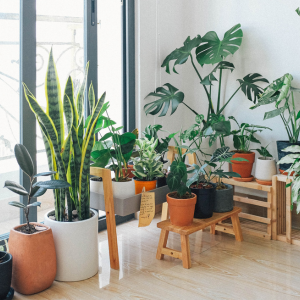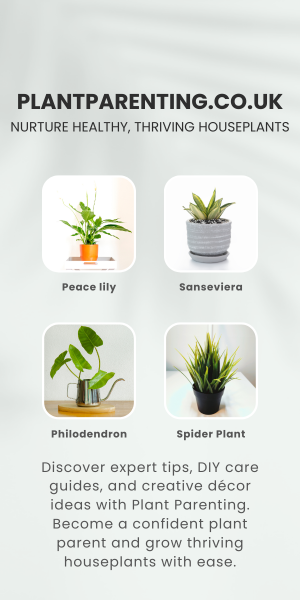Spring Awakening: How to Look After Your Indoor Plants in Spring
Spring is a magical time for indoor plant lovers. As the days get longer, temperatures rise, and sunlight grows stronger, your indoor plants begin to wake up from their winter dormancy. This seasonal transition marks a critical period of care, where a little attention can lead to lush foliage, robust growth, and even blooms indoors.
In this guide, we’ll walk you through everything you need to know to take excellent care of your houseplants in the spring — from adjusting watering routines to repotting, feeding, pruning, and more. Whether you're a seasoned plant parent or a budding enthusiast, spring is your golden opportunity to help your leafy companions thrive.
1. Understand the Spring Shift
During winter, most houseplants go into a state of dormancy or slow growth due to shorter days and cooler temperatures. In spring, plants shift back into growth mode. This change demands an update to your plant care routine — think of it as their New Year’s resolution for growth, and you're the coach.
Key changes in spring:
- More daylight = faster photosynthesis.
- Warmer temperatures = higher metabolic activity.
- New growth = greater need for nutrients and water.
2. Evaluate Each Plant Individually
Not all plants will respond to spring in the same way. Tropical plants like pothos, monstera, and philodendron may respond quickly, while succulents and cacti may take a bit longer. Pay attention to signs of new growth — fresh leaves, buds, or an uptick in leaf size or number — and adjust care accordingly.
Also, consider their native environments. A fern will need something different than a snake plant. Tailor your approach.
3. Increase Watering Gradually
In winter, overwatering is one of the top killers of indoor plants. But in spring, as plants grow more actively, they need more hydration.
How to adjust:
- Start checking soil moisture more frequently.
- Resume a more regular watering schedule — but don’t overdo it.
- Use your finger to test soil; if the top 1-2 inches are dry, it may be time to water.
- Watch for signs of thirst: drooping leaves, crispy edges, and dry soil pulling away from the pot edges.
Always ensure your pots have good drainage — soggy roots are a fast track to root rot.
4. Begin Feeding Again
Plants use a lot of energy during spring growth, so it’s time to resume fertilizing.
Fertilizing tips:
- Use a balanced, water-soluble fertilizer (e.g., 10-10-10 or 20-20-20).
- Start with half-strength every 2–4 weeks and increase if the plant responds well.
- For flowering plants, consider a fertilizer higher in phosphorus (middle number).
- Avoid fertilizing a stressed or freshly repotted plant — let them settle first.
Remember: More fertilizer doesn’t mean faster growth — too much can burn roots and cause chemical build-up.
5. Repot If Necessary
Spring is the best season to repot houseplants. With active root and leaf growth, plants recover from the shock of repotting more quickly.
Signs your plant needs repotting:
- Roots poking out of the drainage holes.
- Water running straight through the pot.
- Soil compacted or pulling away from the pot.
- Slowed growth despite good care.
Choose a pot 1–2 inches larger in diameter, use fresh potting mix suitable for your plant type (e.g., cactus mix, orchid bark, or general indoor mix), and gently tease apart root balls that are heavily root-bound.
6. Prune and Clean
Winter often leaves houseplants looking a little scruffy. Spring is the perfect time to clean and prune them for a fresh start.
Spring cleaning steps:
- Trim off dead or yellowing leaves.
- Prune leggy or overgrown stems to encourage bushier growth.
- Wipe dust from leaves with a damp cloth (plants "breathe" through their leaves).
- Clean the pot and remove any debris or mold from the soil surface.
Pruning helps redirect the plant’s energy and also makes your space look tidier and more vibrant.
7. Adjust Lighting Conditions
With the sun shifting higher in the sky and staying out longer, your home’s lighting dynamics will change. Some plants may need to be moved to adjust for stronger sunlight.
Lighting tips:
- Gradually introduce plants to brighter spots to avoid sunburn.
- Rotate pots every week or so to ensure even growth.
- Consider using sheer curtains to diffuse harsh midday sun for sensitive plants like calatheas or ferns.
- If you’ve used grow lights in winter, adjust their timing and intensity to sync with natural light.
8. Check for Pests
Pests like spider mites, mealybugs, aphids, and fungus gnats become more active in spring — just like your plants.
What to do:
- Inspect leaves (especially undersides) weekly.
- Use a magnifying glass if necessary.
- Isolate any infected plant.
- Wipe off pests with a cotton swab dipped in alcohol or spray with neem oil.
- Maintain airflow and avoid overwatering, which can attract pests.
Healthy, well-cared-for plants are less susceptible to infestations, so prevention is key.
9. Propagate and Multiply
Spring is an ideal time to propagate many indoor plants. It's a great way to multiply your collection or share cuttings with friends.
Easy plants to propagate:
- Pothos
- Monstera
- Snake plants
- Spider plants
- Tradescantia
- ZZ plants
Use clean, sharp tools, and place cuttings in water or moist soil. Keep them warm and bright but not in direct sun, and soon you'll see roots forming!
10. Refresh Your Routine
Spring is a time for new beginnings — and that includes your plant care habits. Create a consistent watering and fertilizing schedule, set up a plant journal if you're really into tracking, or just take a few extra minutes each week to connect with your plants.
Consider rotating or rearranging your plants for a new aesthetic and to give them varied exposure. Check your apps, calendars, or plant reminders to keep everything on track.
Final Thought: Grow with the Season
Caring for your indoor plants in spring isn’t just about doing more — it’s about doing differently. With the right adjustments, your houseplants will reward you with lush, vibrant growth, and your indoor space will feel more alive than ever.
Remember, your plants have survived the quiet of winter — now they’re ready to stretch toward the light. And so are you. ?




:ThisSucculentNotOnlyBeautifiesYourSpacebutAlsoOffersSoothing,MedicinalBenefits_4872400955.png)
:AVersatileTrailingPlantThatToleratesLowLightandIrregularWatering,MakingItPerfectforAnyRoom_4745654285.png)


No comments, be the first to comment